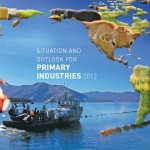We’re starting a new weekly round-up of the week’s top meaty news items. Changes to shipping arrangements have been front page news here in New Zealand and will probably be on the minds of delegates for next Monday’s Red Meat Sector Conference in Queenstown. But there’s also been a ‘world first’ for venison scanning, among other items.
Starting from next month, ports in Wellington and Nelson will be added to Maersk’s Southern Star run, which links New Zealand directly to the Malaysian hub port Tanjung Pelepas, according to the Dominion Post. The more reliable service with the dedicated hub will attract chilled meat exporters, Centreport’s operations general manager Steve Harris is quoted as saying, ” … because the time that the product is on the shelf in Europe … is critical.”
This followed the news, earlier in the week when shippers Maersk and Hamburg-Sud announced that they are withdrawing container pickups from the Port of Timaru, slicing $6 million off that Port’s annual revenue and resulting in the loss of about 50 port jobs. The service will be streamlined and will now operate from Napier to Otago. The new arrangements will come into place in mid-September, just prior to the start of the new meat export season.
Also in Timaru, in what’s said to be a “world first for venison scanning”, meat scanning technology already used for lamb and cattle is to be introduced for deer at Alliance Group’s new venison processing chain at Timaru’s Smithfield site later in the season.
Meanwhile, deer farmers are eyeing Europe, as exporters organise their chilled venison contracts for the European game season, according to a Fairfax news report. Venison prices are said to have “so far maintained a level of stability reflected in the meat schedule prices deer producers were being paid.”
New Zealand beef was amongst a ‘greymarket’ consignment of smuggled goods on a container ship seized by Chinese authorities after attempts were made to smuggle it into China. The frozen meat cargo worth US$10 million also contained other beef, chicken wings and pork from the US, Brazil and Australia. One Australian industry commentator has estimated the smuggled meat trade from Hong Kong, Schenzen and Vietnam accounts for 500,000 tonnes each year. Lower tariff rates for New Zealand meat, as a result of the free trade deal with China will make this trade less profitable for smugglers. However, concerns are for food safety of the smuggled perishable products as the cold chain may not be managed efficiently.
Click on any of the links to read more about each item.



